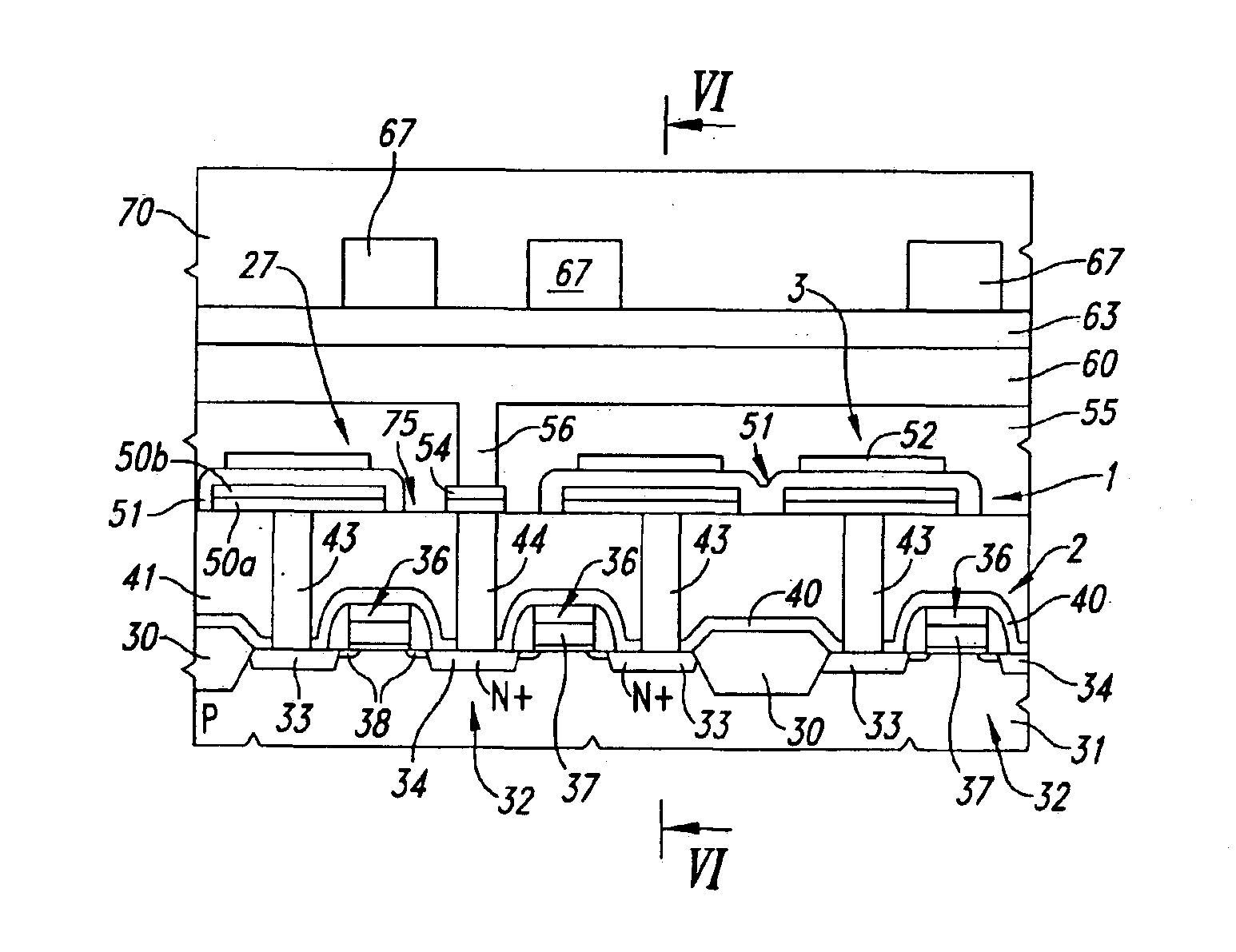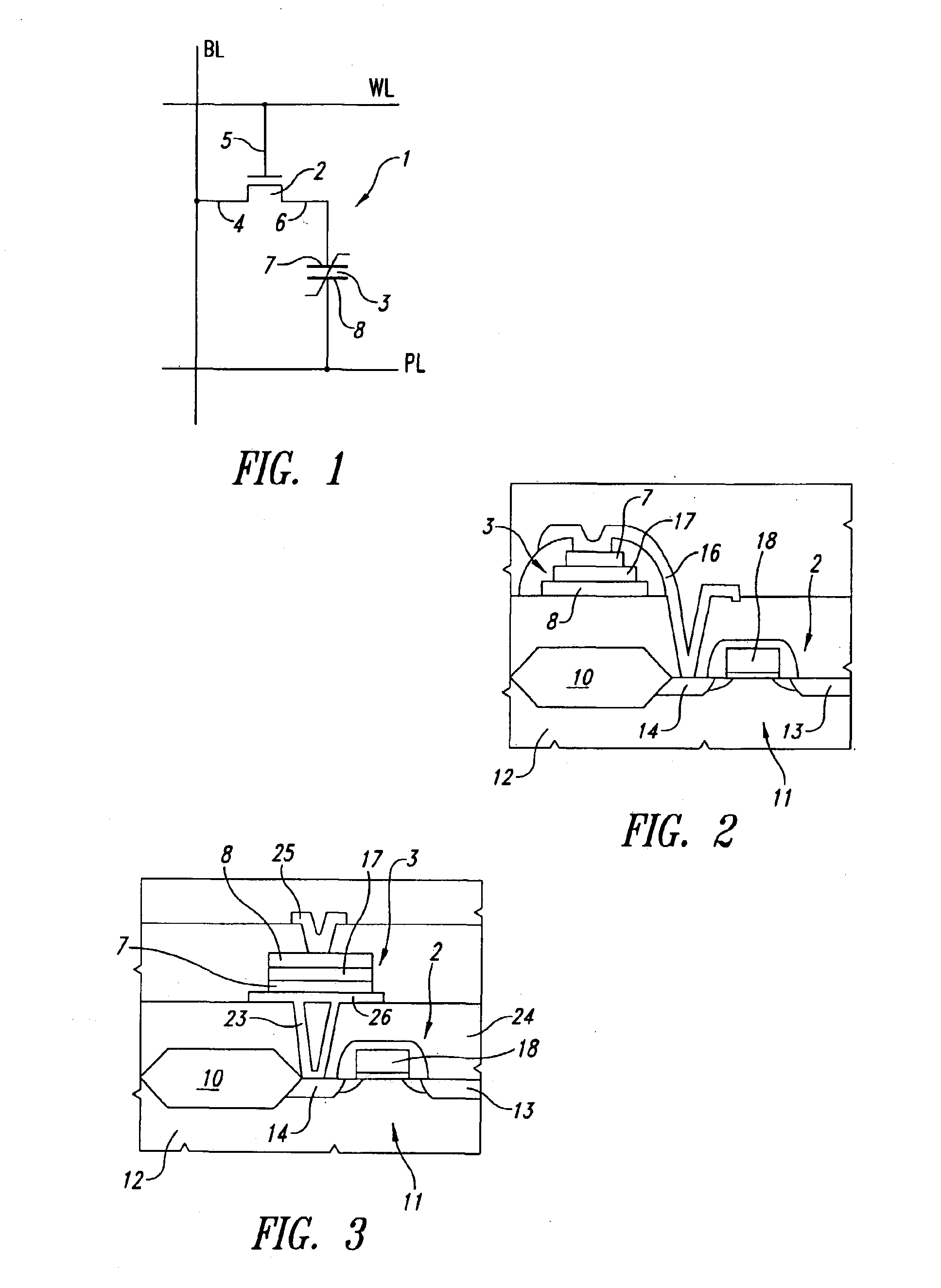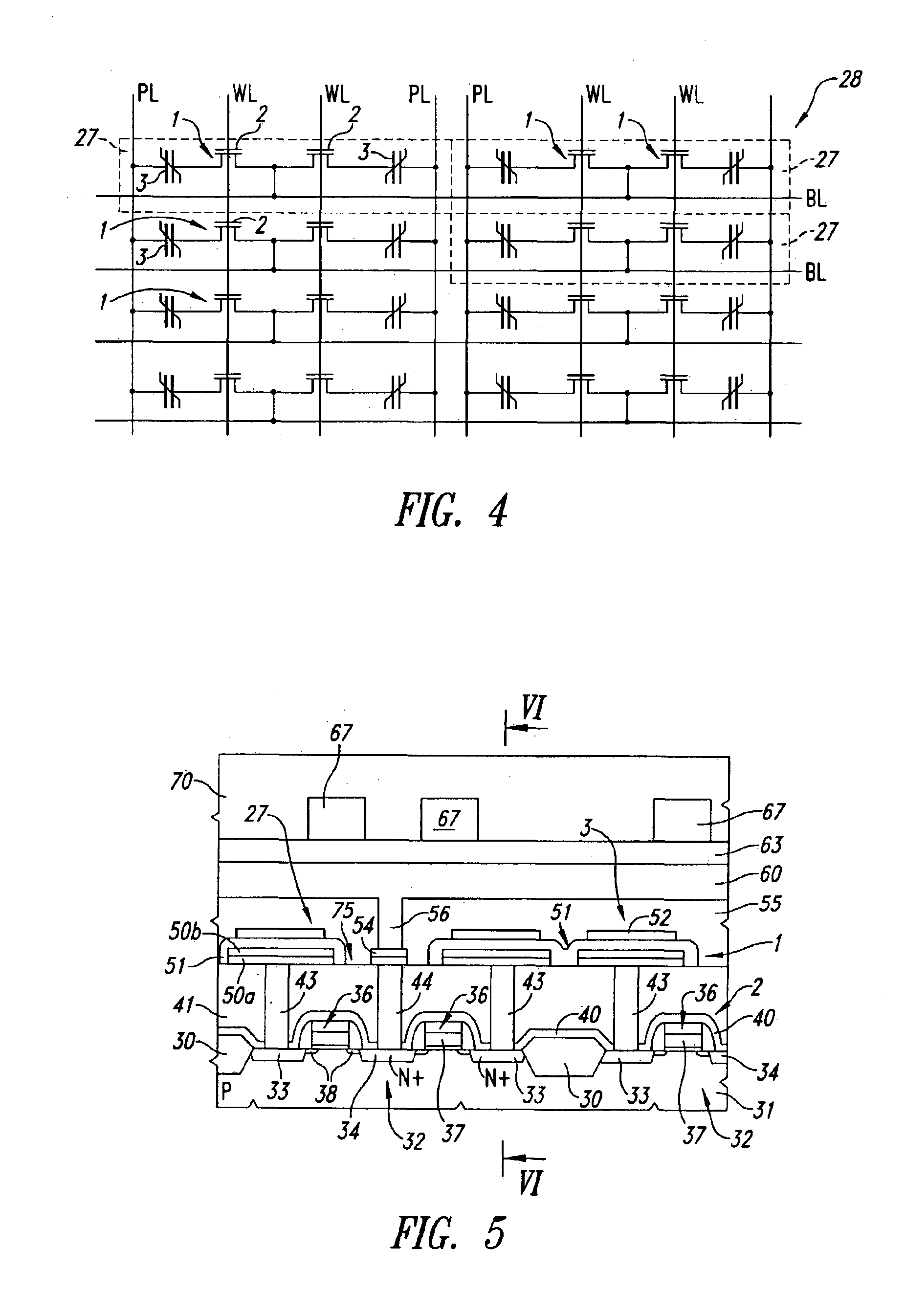Method of fabricating a ferroelectric stacked memory cell
- Summary
- Abstract
- Description
- Claims
- Application Information
AI Technical Summary
Benefits of technology
Problems solved by technology
Method used
Image
Examples
Embodiment Construction
FIGS. 5-7 show stacked cells 1 constructed according to the invention. The present description refers to ferroelectric cells in particular, without being restricted to these.
In detail, FIG. 5 shows a pair of cells 27 and a single ferroelectric cell 1 adjacent to the pair of cells 27 in the direction of the bit lines (horizontal direction in FIG. 5). Pairs of adjacent cells 27 are insulated from each other by a thick oxide layer 30 (field oxide) which delimits, inside a P-type substrate 31, active areas 32 in which two drain regions 33 and a common N+ type source region 34 are formed. In a known way, gate electrodes 36 are formed above the substrate 31 and are insulated therefrom by a thin oxide layer 37. The gate electrodes 36 are preferably made by bands comprising a double layer of polycrystalline silicon and tungsten silicide running perpendicular to FIG. 5 and defining word lines; the gate electrodes 36 are also laterally flanked by oxide spacers 38.
Less doped drain extension re...
PUM
 Login to View More
Login to View More Abstract
Description
Claims
Application Information
 Login to View More
Login to View More - R&D
- Intellectual Property
- Life Sciences
- Materials
- Tech Scout
- Unparalleled Data Quality
- Higher Quality Content
- 60% Fewer Hallucinations
Browse by: Latest US Patents, China's latest patents, Technical Efficacy Thesaurus, Application Domain, Technology Topic, Popular Technical Reports.
© 2025 PatSnap. All rights reserved.Legal|Privacy policy|Modern Slavery Act Transparency Statement|Sitemap|About US| Contact US: help@patsnap.com



